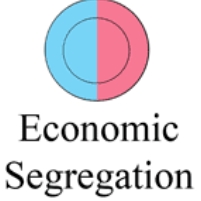Middle-Income Neighborhoods Disappearing in U.S. as Rich and Poor Divide
Thursday, November 17, 2011
 (graphic: tothevillagesquare.org)
(graphic: tothevillagesquare.org)
The United States is experiencing an increase in income segregation, according to a new study produced by Stanford University.
Forty years ago 65% of families were lived in middle-income neighborhoods. By 2007, that percentage had fallen to 44%.
At the same time, the country’s low-income and wealthy populations increased in size. Those living in poor neighborhoods went up from 8.4% to 17%, while Americans living in “affluent” neighborhoods more than doubled, from 6.6% to 14.1%.
Researchers found that the U.S. has undergone “more residential sorting by income, with the rich flocking together in new exurbs and gentrifying pockets where lower- and middle-income families cannot afford to live,” wrote Sabrina Tavernise in The New York Times.
The cities with the greatest economic segregation are Bridgeport, Connecticut; New York City, Philadelphia, Newark and Dallas. Between 2000 and 2007, the separation of economic classes expanded the most in Detroit; Oklahoma City; Toledo, Ohio; and Greensboro, North Carolina.
-Noel Brinkerhoff, David Wallechinsky
Middle-Class Areas Shrink as Income Gap Grows, New Report Finds (by Sabrina Tavernise, New York Times)
Growth in the Residential Segregation of Families by Income, 1970-2009 (by Sean F. Reardon and Kendra Bischoff, US2010 Project) (pdf)
Rich Americans Lengthened Lead over Others…and That was before Recession (by Noel Brinkerhoff and David Wallechinsky, AllGov)
Homeless Mom Faces 20 Years in Jail for Enrolling Son in Better School District (by Noel Brinkerhoff and David Wallechinsky, AllGov)
- Top Stories
- Unusual News
- Where is the Money Going?
- Controversies
- U.S. and the World
- Appointments and Resignations
- Latest News
- Can Biden Murder Trump and Get Away With it?
- Electoral Advice for the Democratic and Republican Parties
- U.S. Ambassador to Greece: Who is George Tsunis?
- Henry Kissinger: A Pre-Obituary
- U.S. Ambassador to Belize: Who is Michelle Kwan?






Comments